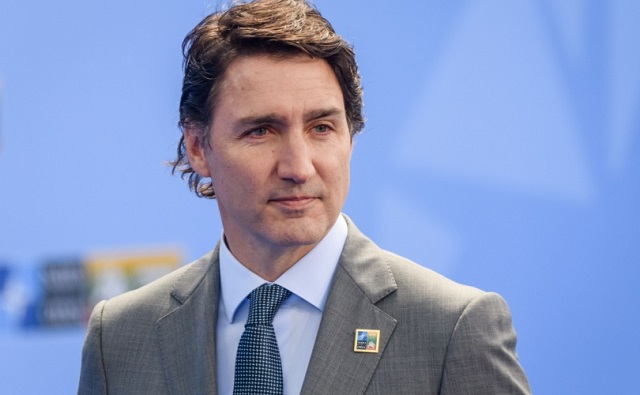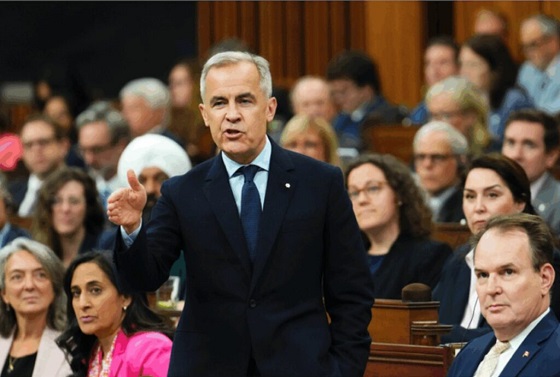National
Liberals lose another ‘safe’ seat, Trudeau pleads with Canadians to get more ‘engaged’

From LifeSiteNews
Trudeau’s Liberals lost yet another by-election in a ‘safe’ riding, garnering just 27.2 percent of the vote. The seat, which has been held by the Liberals since its creation in 2015, was won by the Liberals with 42.9 percent of the vote in 2021.
Prime Minister Justin Trudeau claimed Canadians need to understand what is “at stake” after his Liberal Party lost yet another byelection in a supposedly “safe” Liberal area.
After the last votes were counted early Tuesday morning, results from the Montreal-area LaSalle–Émard–Verdun riding byelection held on Monday had Bloc Québécois candidate Louis-Philippe Sauvé beat out Liberal candidate Laura Palestini by a slim margin.
The Bloc’s Sauvé garnered 28 percent of the vote, while the Liberal’s Palestini rang in with 27.2 percent of the vote. While the margin of loss was slim for the Liberals, the drop-off is significant considering the Liberals handily won the riding with 42.9 percent of the vote in 2021.
In third place was New Democratic Party with 26.1 percent of the vote, while the Conservatives came in an expected fourth place with 11.6 percent.
Speaking with reporters Tuesday morning, Trudeau, instead of taking blame for his Liberal Party’s increasing unpopularity and recent byelection upset losses, claimed that Canadian voters just need to be more “engaged.”
“We need people to be more engaged. We need people to understand what’s at stake in this upcoming election,” he said, referring to the looming 2025 election, which at this point could feasibly be called early.
“Obviously, it would have been nicer to be able to… win… but there’s more work to do and we’re going to stay.”
Last Friday, Trudeau boasted to reporters that he could not “wait for the conversations we’re having in LaSalle-Émard-Verdun.”
“I can’t wait to welcome Laura Palestini to Ottawa,” he added at the time.
The LaSalle–Émard riding, until Monday, had been under Liberal hands since it was created in 2015. Trudeau’s former minister of justice, David Lametti, was its MP until he resigned earlier this year.
Monday’s Liberal byelection loss is the second shock defeat for Trudeau’s party in just over two months. In June, the Conservative Party won a by-election in a longstanding Liberal stronghold riding in downtown Toronto.
The most recent loss suggests that Trudeau’s Liberal government is indeed hanging on by a thread, as suggested by all recent polls which have shown that Pierre Poilievre’s Conservative Party is set to win big when the next federal election takes place.
The souring of voters to the Liberal Party under Trudeau comes at the same time that even some of his MPs are turning on him. Last week, LifeSiteNews reported on how Liberal MP Alexandra Mendès, who serves as the assistant deputy speaker of the House of Commons, became the first in the party to publicly call for Trudeau to resign, saying directly that he is not the “right leader” for the party.
The Trudeau resignation call comes amid Trudeau losing support from the socialist NDP to keep him in power. NDP leader Jagmeet Singh pulled his official support for Trudeau’s Liberals two weeks ago.
Poilievre has promised that at “earliest possible opportunity” he will bring forth a non-confidence motion against Trudeau’s Liberal government which, if successful, would force an immediate election.
Business
Major tax changes in 2026: Report

The Canadian Taxpayers Federation released its annual New Year’s Tax Changes report today to highlight the major tax changes in 2026.
“There’s some good news and bad news for taxpayers in 2026,” said Franco Terrazzano, CTF Federal Director. “The federal government cut income taxes, but it’s hiking payroll taxes. The government cancelled the consumer carbon tax, but it’s hammering Canadian businesses with a higher industrial carbon tax.”
Payroll taxes: The federal government is raising the maximum mandatory Canada Pension Plan and Employment Insurance contributions in 2026. These payroll tax increases will cost a worker up to an additional $262 next year.
For workers making $85,000 or more, federal payroll taxes (CPP and EI tax) will cost $5,770 in 2026. Their employers will also be forced to pay $6,219.
Income tax: The federal government cut the lowest income tax rate from 15 to 14 per cent. This will save the average taxpayer $190 in 2026, according to the Parliamentary Budget Officer.
Carbon taxes: The government cancelled its consumer carbon tax effective April 1, 2025. However, the government still charges carbon taxes through its industrial carbon tax and a hidden carbon tax embedded in fuel regulations.
The industrial carbon tax will increase to $110 per tonne in 2026. While the government hasn’t provided further details on how much the industrial carbon tax will cost Canadians, 70 per cent of Canadians believe businesses pass on most or some of the cost of the tax to consumers, according to a Leger poll.
Alcohol taxes: Federal alcohol taxes are expected to increase by two per cent on April 1, 2026. This alcohol tax hike will cost taxpayers about $41 million in 2026-27, according to industry estimates.
First passed in the 2017 federal budget, the alcohol escalator tax automatically increases excise taxes on beer, wine and spirits every year without a vote in Parliament. Since being imposed, the alcohol escalator tax has cost taxpayers about $1.6 billion, according to industry estimates.
“Canadians pay too much tax because the government wastes too much money,” Terrazzano said. “Canadians are overtaxed and need serious tax cuts to help make life more affordable and our economy more competitive.
“Prime Minister Mark Carney needs to significantly cut spending, provide major tax relief and scrap all carbon taxes.”
You can read the CTF’s New Year’s Tax Changes report here.
Alberta
Schools should go back to basics to mitigate effects of AI

From the Fraser Institute
Odds are, you can’t tell whether this sentence was written by AI. Schools across Canada face the same problem. And happily, some are finding simple solutions.
Manitoba’s Division Scolaire Franco-Manitobaine recently issued new guidelines for teachers, to only assign optional homework and reading in grades Kindergarten to six, and limit homework in grades seven to 12. The reason? The proliferation of generative artificial intelligence (AI) chatbots such as ChatGPT make it very difficult for teachers, juggling a heavy workload, to discern genuine student work from AI-generated text. In fact, according to Division superintendent Alain Laberge, “Most of the [after-school assignment] submissions, we find, are coming from AI, to be quite honest.”
This problem isn’t limited to Manitoba, of course.
Two provincial doors down, in Alberta, new data analysis revealed that high school report card grades are rising while scores on provincewide assessments are not—particularly since 2022, the year ChatGPT was released. Report cards account for take-home work, while standardized tests are written in person, in the presence of teaching staff.
Specifically, from 2016 to 2019, the average standardized test score in Alberta across a range of subjects was 64 while the report card grade was 73.3—or 9.3 percentage points higher). From 2022 and 2024, the gap increased to 12.5 percentage points. (Data for 2020 and 2021 are unavailable due to COVID school closures.)
In lieu of take-home work, the Division Scolaire Franco-Manitobaine recommends nightly reading for students, which is a great idea. Having students read nightly doesn’t cost schools a dime but it’s strongly associated with improving academic outcomes.
According to a Programme for International Student Assessment (PISA) analysis of 174,000 student scores across 32 countries, the connection between daily reading and literacy was “moderately strong and meaningful,” and reading engagement affects reading achievement more than the socioeconomic status, gender or family structure of students.
All of this points to an undeniable shift in education—that is, teachers are losing a once-valuable tool (homework) and shifting more work back into the classroom. And while new technologies will continue to change the education landscape in heretofore unknown ways, one time-tested winning strategy is to go back to basics.
And some of “the basics” have slipped rapidly away. Some college students in elite universities arrive on campus never having read an entire book. Many university professors bemoan the newfound inability of students to write essays or deconstruct basic story components. Canada’s average PISA scores—a test of 15-year-olds in math, reading and science—have plummeted. In math, student test scores have dropped 35 points—the PISA equivalent of nearly two years of lost learning—in the last two decades. In reading, students have fallen about one year behind while science scores dropped moderately.
The decline in Canadian student achievement predates the widespread access of generative AI, but AI complicates the problem. Again, the solution needn’t be costly or complicated. There’s a reason why many tech CEOs famously send their children to screen-free schools. If technology is too tempting, in or outside of class, students should write with a pencil and paper. If ChatGPT is too hard to detect (and we know it is, because even AI often can’t accurately detect AI), in-class essays and assignments make sense.
And crucially, standardized tests provide the most reliable equitable measure of student progress, and if properly monitored, they’re AI-proof. Yet standardized testing is on the wane in Canada, thanks to long-standing attacks from teacher unions and other opponents, and despite broad support from parents. Now more than ever, parents and educators require reliable data to access the ability of students. Standardized testing varies widely among the provinces, but parents in every province should demand a strong standardized testing regime.
AI may be here to stay and it may play a large role in the future of education. But if schools deprive students of the ability to read books, structure clear sentences, correspond organically with other humans and complete their own work, they will do students no favours. The best way to ensure kids are “future ready”—to borrow a phrase oft-used to justify seesawing educational tech trends—is to school them in the basics.
-

 Daily Caller2 days ago
Daily Caller2 days ago‘There Will Be Very Serious Retaliation’: Two American Servicemen, Interpreter Killed In Syrian Attack
-

 Automotive2 days ago
Automotive2 days agoPoliticians should be honest about environmental pros and cons of electric vehicles
-

 Business2 days ago
Business2 days agoInflation Reduction Act, Green New Deal Causing America’s Energy Crisis
-

 Crime1 day ago
Crime1 day agoTerror in Australia: 12 killed after gunmen open fire on Hanukkah celebration
-

 Media1 day ago
Media1 day agoReporters determined to drive their industry and its reputation into the abyss one Tweet at a time
-

 Business2 days ago
Business2 days agoFuelled by federalism—America’s economically freest states come out on top
-

 Crime1 day ago
Crime1 day agoHero bystander disarms shooter in Australian terror attack
-

 International4 hours ago
International4 hours agoAt Least 15 Killed In Shooting Targeting Jewish Community At Australia’s Bondi Beach, Police Say











